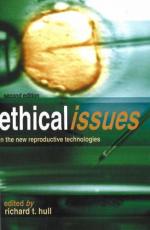|
This section contains 3,155 words (approx. 11 pages at 300 words per page) |

|
Although many women achieved pregnancy through artificial insemination, hormone treatments, or surgery, for some couples these treatments were unsuccessful. While in vitro fertilization (IVF) is an invasive and costly procedure, it has become a realistic option for many couples for whom other reproductive technologies have failed. With the development of IVF, problems with damaged fallopian tubes, age-related infertility, or even unexplained infertility could possibly be overcome.
The Early Days of Embryology
Much of the collective knowledge that made IVF possible was gathered through research with animals. The history of IVF began in 1878 with experiments con- ducted by S.L. Schenk, a Viennese embryologist. Using rabbits and guinea pigs as his subjects, Schenk made several attempts to combine sperm and eggs in a lab dish. The resulting embryos only survived to the two-cell stage, but...
|
This section contains 3,155 words (approx. 11 pages at 300 words per page) |

|




